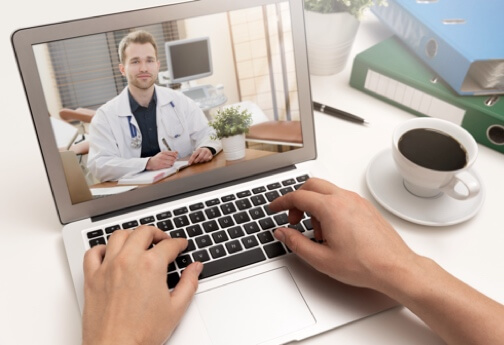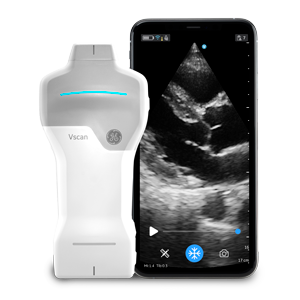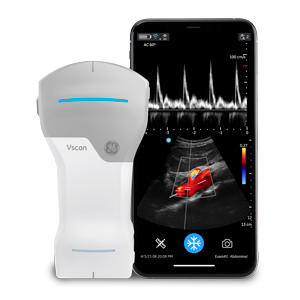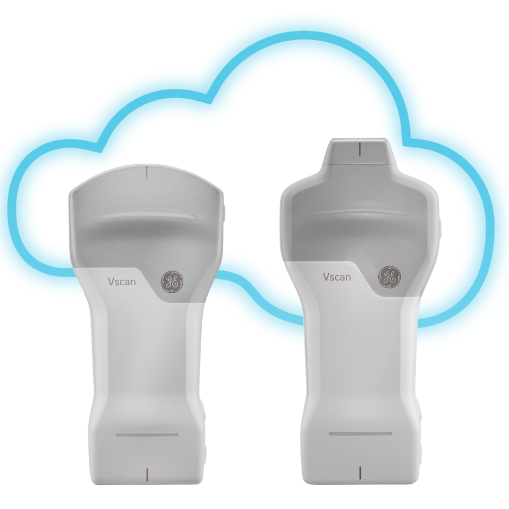
What Is The Importance Of The Doctor-Patient Relationship?
The relationship between a doctor and their patient is extremely important. Patients want to feel that their healthcare team not only listens to their concerns, but provides expert advice and diagnosis. They want to feel that treatment options are based on a strong understanding of their condition.
With increasing pressure on medical professionals to provide quality healthcare, establish trust with their patients, and ensure all patients are receiving adequate time with them — access to tools that support this system are no longer just optional. Physicians need access to tools and technology that will foster a strong doctor-patient relationship, for the duration of their time together. Adding to the complexity, physicians often need data on-hand to debunk information gathered by patients (that they likely uncovered by researching online).
The doctor-patient relationship relies on strong communication, just like every other relationship in healthcare. Between providers, communication failure, not a lack of provider skill, has been identified as the root cause of approximately 80 percent of serious adverse events in healthcare settings. The implications of failures in doctor-patient communications should be taken just as seriously.
There are often many individuals involved in the communication between physicians and patients. Therefore, the more data healthcare professionals have at their disposal for their patients during appointments, the better the decision-making may be and the better patients may feel when leaving the medical facility. There is less risk of miscommunication after the fact when the doctors have crucial inputs at the moment of examination.
Training upcoming physicians and medical professionals to incorporate solid communication strategies into their practice is becoming more common. With the increase in modes of communication in the digital age, gone are the days that patients wait by their landlines to receive a much awaited call from a doctor.
Medical schools are stepping up to the plate and putting more emphasis on relationships and good communication, but more practical steps are needed. Thankfully, a new class of portable tools is emerging to address those gaps.
What Are The Fundamentals Of Doctor-Patient Relationships?
One of the most important facets of any doctor-patient relationship is trust. Physicians who gain the trust of their patients tend to have more success with follow through and treatment than those who are met with skepticism. Although there are several ways that medical professionals gain trust, one is their ability to illustrate their medical expertise at every interaction. Physicians who are well informed and knowledgeable about specific ailments and health issues will likely gain the trust of patients quicker. However, in order to show expertise medical providers must have access to technology.
Handheld and portable medical devices offer many benefits to physicians, who are under immense pressure to deliver quality medical care in a short amount of time. There are many reasons why the use of handheld ultrasound devices is helpful in gaining a patient’s trust.
Another fundamental pillar of the patient-physician relationship is time. A common complaint from patients is that they sometimes feel rushed, which leaves questions unanswered and leads to frustration. The more time medical providers spend trying to diagnose a medical issue, the less time there is for discussion and next steps. Particularly for relatively benign ailments.
Again medical technology can come into play. A quick diagnosis leaves more time for discussion with the patient and an opportunity to answer more questions. A greater degree of patient interaction with the physician tends to improve the patient experience overall.
Physicians who are able to show empathy towards their patients may also foster a better relationship than those who are interpreted as being more emotionless. However, without diagnosis it is more difficult to be empathetic towards the specific situation of a patient. Leading the conversation with a diagnosis, or at least a step towards diagnosis, allows the medical provider to be more in tune to the situation and what the patient may be going through.
Better Doctor-Patient Relationships Start With Physician Empowerment
Often, the discussion around health outcome improvement centers on patient empowerment. Of course, patient-centered health matters, but a large portion of it rests in the hands of physicians.
Physicians have an amazing opportunity to be catalysts in revolutionizing the patient experience, simply by being willing and enthusiastic agents of patient empowerment. Patients are becoming more invested in their health and well-being, and are taking steps to become active participants in their care plans. Providing patients with valuable data inputs that they understand can further empower them to collaborate with their medical provider and ask relevant questions about their health.
At the same time, the benefits of an improved doctor-patient relationship flow both ways. Having confused, irritated patients might lead to poor outcomes, which may directly impact a physician’s feelings of job fulfillment — a dynamic that can’t be ignored as we face the public health crisis of physician burnout. Without clear, concise and readily accessible data — physicians may have a more difficult time providing answers to difficult questions posed by their patients. Not only is it important for patients to walk away with the information they need to make important decisions, medical providers should be given the tools needed to foster a connection and trust with their patients.
Technology That’s Improving The Doctor-Patient Relationship
The relationship between doctors and patients is dynamic and relies on direct communication. However, it’s also filtered through the overall patient experience. Breakthroughs in technology have been made that not only improve care, but also open up new channels of communication for physicians.
Patients are sometimes left with feelings of confusion when they do not fully comprehend the diagnosis and information provided by their care team. Medical providers with access to handheld ultrasound devices are able to provide more clarity to their patients during appointments, and explain through visual aides.
Ways in which technology can benefit the doctor-patient relationship include:
- Better dissemination of information
- Improved communication between medical providers (if the patient is working with multiple medical experts)
- Faster access to diagnosis and next steps (reducing the need for medical providers to follow-up with the patient at a later date)
- Minimizing the time in which a patient must wait for a diagnosis
- Demonstrating that the medical provider has access to the latest technology to support their patients
Enhancing clinical relationships requires not only better communication skills, but also tools that close the gap between diagnosis and patient understanding through a more educational and interactive experience. Patients can not only see what their doctors see, but also get more precise information, like the exact location of an issue. This is where portable technology, such as handheld ultrasound, gives teeth to initiatives attempting to improve the doctor-patient relationship. It is much easier to show a patient what is happening, rather than just telling them. Even skeptics would be hard-pressed to challenge what their doctor is communicating when the visual evidence is readily available via portable technology. At the very least, the visual support facilitates a higher-quality conversation between patient and physician.
Understanding The Power Of Handheld Ultrasound
Handheld ultrasound has led the way to a new level of accessibility for healthcare providers, with some units being the size of a smartphone, while still providing quality images. Medical devices of this size can greatly improve the accessibility of medical care. According to the conclusion of a study published in The Acta Anaesthesiologica Scandinavica that compared the Vscan and the Vivid-i systems, “the Vscan displays image quality interchangeable with larger and more expensive systems. The apparatus is well-suited for performing a (focus-assessed transthoracic echocardiography) examination in a one-day surgery setting and could very well also be applicable in almost any situation involving patients with acute illness.”
Not only can portable ultrasound technology improve doctor-patient relationships, training and certifications available to healthcare professionals, for example, as offered by GE HealthCare, will help them to achieve more accurate analysis and diagnosis.
The simple nature of their portability can help doctors at the bedside, as well. Authors of a study published in The Annals of Internal Medicine concluded “that the use of ultrasound by hospitalists will continue to modernize the bedside evaluation and streamline the diagnostic process.” Areas of clinical usage include, but are not limited to:
- Cardiac Ultrasound
- Emergency Ultrasound
- Musculoskeletal (MSK) Ultrasound
- Primary Care Ultrasound
- Urology Ultrasound
- Women’s Health Ultrasound
Refer to the Handheld Ultrasound Knowledge Hub to view examples of clinical images from the above clinical areas.
Consider that the use of pocket mobile ultrasound devices (PUDs) has been found to actually spare patients the negative and often costly experience of unnecessary exams. According to a study published in PLOS One, “after a simple and short training course, a PUD examination can be used in addition to a physical examination to improve the answer to 10 common clinical questions concerning in- and outpatients, and can reduce the need for further testing.” Not only does unnecessary testing impact a patient’s wallet, it can also drain time for both the patient and the provider. Patients who undergo unnecessary testing are often forced to take time off of work, while the doctor is waiting to receive the results and arrive at a diagnosis. The time invested for extra testing, wait time, diagnosis, and follow-up appointments may decrease (sometimes significantly) with the use of handheld technology.
Clinical settings, though, are just the beginning. Organizations such as Doctors To You are meeting patients where they are and leveraging technology like Vscan Extend™ to expand the reach of house calls. We’re also entering a period where more employers are offering healthcare services in the workplace. Companies including Disney, Apple, Boeing, Cisco and Goldman Sachs now provide on-site clinics for their employees, further increasing the potential for portability and accessibility in diagnostic modalities like handheld ultrasound, and opening up an entirely new venue for the doctor-patient relationship.
Portable handheld ultrasound devices don’t just mean portable technology, they mean that medical providers can be portable as well. Field diagnostics can be hugely important during times of crisis, when large stationary equipment usage is not an option. See how handheld aeromedical ultrasound provides quick information to rescue teams to help save lives when each minute counts.
Initiatives around improving outcomes and the patient experience can easily remain abstract without serious discussions about the technology that pulls them into clinical realities. Forward-thinking healthcare leaders should keep an eye out for developments like handheld ultrasound as foundational tools in improving doctor-patient communications.
While integrating communications and the importance of relationship building into the medical school curriculum is a positive step forward, without supporting technology it becomes difficult to achieve in practice. In non-emergency situations, portable handheld ultrasound technology can reduce wait time and increase time to diagnosis. In medical emergencies, the technology could offer potentially life saving answers when time is crucial to survival.
Related Resources
- Determining If Handheld Ultrasound Is Right For Your Practice
- Vscan Air™ Handheld Ultrasound
- Vscan Extend™ Handheld Ultrasound






